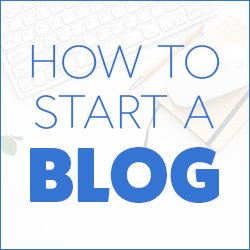When you work for a living it is important to live within your means. Every budget and finance tool available will scream at you if spending exceeds income.
In retirement, it is also important to live within your means. But your means is no longer tied to income. In fact, there is zero relationship between income and spending when you are living off assets.
Big Spending, Little Income
When I shared our recent annual spending and 2022 tax return there was a common theme in the comments and emails.
Our spending is BIG. Our income is little.
Yet we still manage to make large contributions to retirement accounts and live well in “California” (presumably an expensive place to live.)
How does this all work?
Simply stated – we sell assets
Quick recap: In 2022 we had total income on our 1040 of about $60k. Spending was about $110k, and outgoing cashflow was closer to $160k.
A reasonable person could see that as an undesirable position to be in. But it isn’t really as dire as it first appears. Rather, it is perfectly normal and mathematically sound. It is also very tax advantageous.
Let’s explore that.
Spending Limit
We do need an upper limit for regular spending, and for many people this comes from the 4% rule.
Loosely it states that you can plan with a high degree of confidence to spend 4% of your initial portfolio value each year, and continue to keep that same standard of living for many decades (or more.)
Portfolio value. Not income.
In how many of those years will 4% be greater than income?
Hopefully all of them.
If the dividend rate on the SP500 is about 2% and the yield on 10-year treasuries is 4%, then a 60/40 portfolio would have income of less than 3%. A more stock heavy portfolio like we have might yield less than 2%.
The remainder of spendable cash would come from a variety of sources, including the sale of assets (selling stock.)
In our 2022 example, I needed to generate an extra $50,000 in cash to pay all expenses and about $100,000* in cash above to fulfill our cash flow obligations.
Finding $100,000 and other clarifications
Fortunately finding an extra $100k is not too difficult, and some of it short lived.
We started the year with over $18,000 in cash (~2 months’ spending.)
Throughout the year I sold exactly $66,320 worth of stock (realizing a loss of $9,762.)
I also took on new debt in the amount of $15,689 (for the new HVAC – monthly payment less than energy savings)
Boom, $100k.
Much of the stock sale existed as cash for only a brief moment. I moved those funds into 2 Roth accounts ($6,000 x 2) and my Roth 401k ($20,500.) I then purchased non-substantially identical investments within the Roths.
For clarity, only earned income can be contributed, but the cash has to come from somewhere and in this case it came from a stock sale. Also for clarity, moving money from account A to account B requires cash but is not an expense.
In addition to this non-expense, funds also flowed into mortgage (~$6k) and car loan principal (~$7,500.) These transactions result in no change to net worth and can be spent in the future (minus car depreciation.)
For more details/examples, see:
Legal Money Laundering
Double Your Roth Contributions (Without Working or Earning More)
Best Ways to Get Cash
I chose to sell stock for cash because it is easy and VERY tax friendly.
There are other options, with varying degrees of tax implications. The following is a short non-exhaustive list.
$ source / Taxable percentage
Cash – 0%
Debt – 0%
Roth contribution withdrawals – 0%
Qualified Roth withdrawals – 0% (after age 59.5)
Credit card rewards points – 0%
Municipal bond interest – 0% (but taxable under the ACA)
Social Security – 0% – 85%
Sale of assets (e.g. stock)
– short term gains – <100%
– long term gains – <100% (favorable tax treatment, e.g. 0% tax rate)
Business income – <100%
Interest – 100%
Qualified dividends – 100% (favorable tax treatment, e.g. 0% tax rate)
Ordinary Dividends – 100%
IRA / 401k withdrawals – 100%
W2 income – 100%
Taxable Income ≠ Income
If anybody ever asked me, “What was your total income in 2022?” I would just look at the 1040 from that year and see it was $60,534.
But that number already includes about $10,000 worth of deductions that are not actual expenses or are already factored in elsewhere. This is why business income is less than 100% taxable.
For example:
- Business use of your home: $5,655 (actual expenses already included in mortgage, utilities, home maintenance, etc…. plus depreciation.)
- Qualified Business Income deduction: $1,138 (free bonus deduction just because)
- Realized capital loss: $3,000
The capital loss is an interesting deduction – After 15+ years of dividends and tripling in value, I sold this stock for a substantial profit but was able to realize a taxable loss after a decade of cap gain harvesting. (stock originally purchased in 2007 when the SP500 was around 1,500 (currently ~4,400.))
* Overall point – the amount of cash I needed to generate is about $10k less than it appears at first glance.
Summary
We spend a lot more than we earn. That is OK – There is no relationship between income and spending when living off of assets, just keep total expenses under 4%.
Selling assets is a normal and natural part of retirement. By prioritizing some $ sources over others, overall tax levels can be quite favorable.




Why Roth 401k instead of Pre-Tax? Curious to know who is the plan administrator and costs? Thank you.
Got it, Roth because no tax liaiblity.
Yes, we have a 0% tax rate and even left some credits on the table… so additional deductions would be bad today and adding a tax burden by going pre-tax would be bad in the future.
We could also just leave everything in taxable, but since our brokerage account is already sizable the Roths give us some extra flexibility down the road.
We are at E*trade but could also go with Vanguard or Fidelity. Zero fees with any of them.
You’re doing great, even more than 4% can be sustainable based on your flexible spending and generous tax subsidies. Your next Ted Talk should be how to legally make the tax code work for you, you’ve done a great job of learning the ins and outs of how it applies to FI.
Enjoy this mild Sac summer while it lasts!
Summer has been great so far – still waiting for those 115F days.
In some cases you could have spent double 4% (see: The Best Retirement Ever) but best to plan for less and adjust if the market goes your way.
Agree regarding the Ted Talk topic. 👍
This was on my short list for the first talk – I will apply to speak again on the tax topic.
A great follow up post Jeremy!
While living off assets in retirement, maintaining a sustainable spending level is crucial as you pointed out. Apart from the 4% rule, are there other factors or strategies that you are considering to ensure that your assets can support your lifestyle?
Mr. NN!
Not really, no. Still following the initial plan which is outlined at the end of this post, but not much matters anymore:
What is Your Retirement Number – The 4% Rule
If over a 30 y period liquidating and spending 4% / y of initial capital of $1 (resulting in a 10% failure rate where final capital is $0), with an inflation rate of 3% then the nominal total return required must equal or exceed:
= (1 + RATE(30, 4%, -1, 0, 0)) * (1 + 3%) – 1
= 4.3%
Hopefully not lower or negative in the early years
To avoid sequence of early poor returns, invest in non-volatile securities yielding said nominal total return such as, err, …
Bank deposits, short term government debt returns have not been lacking in volatility.
But 30 y withdrawing 2% with unchanged $1 capital, nominal total return required:
= (1 + RATE(30, 2%, -1, 1, 0)) * (1 + 3%) – 1
= 5.06%
which is about the historic average.
Jeremy, long time GCC follower here. Love your material.
Question: I don’t understand how to put unearned income into a Roth. I understand the reason why but am unto see how to legally pull it off. Can you clarify?
Thank you,
Steve.
Above should read: “…unable to see how…”. Love that autocorrect!
I have earned income and am contributing earned income.
But since we spend more than 100% of that income , I need to sell stock to get cash to move into the Roth accounts.
Another great post, Sir!
Could you please explain how it worked?
I sold this stock for a substantial profit but was able to realize a taxable los
I bought stock in 2007. I cap gain harvested it for 10+ years (sell stock and buy it back for a realized gain that is taxed at 0%.) When I sold it, I sold it for more than I paid in 2007 but less than the repurchase price from the last gain harvest.
This is really smart. Could you please talk a little more about this? And give us a few stocks we can trade this way?
This is just tax gain harvesting. Google that phrase and there are loads of examples and details.
I also walk through the basics in the Never Pay Taxes Again post.
This can be done with any stock or fund. I did it primarily with VTI and equivalents.